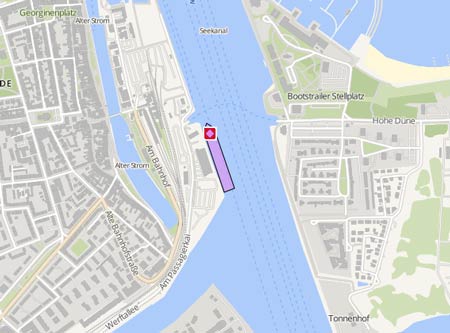EVA-316
Latest ports
Latest Waypoints
Latest news
Survey ships started work at Estonia wreck
27 years after the sinking of the Estonian ferry "Estonia", in the night of September 28, 1994 with 989 people on board on her way from Tallinn to Stockholm off the Finnish south coast, in which 852 people were killed. the authorities from Estonia and Sweden have started new investigations on the wreck. The “Electra af Askö” and the Estonian “Eva 316” arrived at the sinking site of the accident in the night ofJuly 9, 2021, for preliminary study which will last until July 18, during which the wreck and the sea floor are examined with echo sounders and sonar devices. An underwater robot with a camera will also be used. The data, which are collected with the help of experts from the Stockholm University SU, are to be visualized later, which can take several months. More extensive investigations are then planned for next spring. On another ship of the Estonian border guard, bishops from Finland, Sweden, Estonia and Latvia held a memorial ceremony for the victims at noon, before investigations with a multibeam echo sounder were carried out until evening. Due to high swell, the work at the wreck, which is almost 80 meters deep, was canceled in the late evening of July 9. According to the official investigation report from 1997, the torn off bow visor was the cause of the sinking. Survivors and bereaved relatives have long called for investigations to be restarted. Documentary filmmakers revealed in 2020 that they used a diving robot to discover, among other things, a meter-wide hole in the ship's hull. Because many of the dead could not be recovered, the wreck is under protection as a sea grave and may not be visited. After the revelations, Sweden introduced legal changes so that authorities can examine the finds more closely. These changes came into effect at the beginning of July.
Icebreaker will be used for Estonia investigation
On July 8, 2021, the preliminary investigation of the wreck of the Estonian ferry 'Estonia' (IMO: 7921033) i)will commence with a technical survey of the seabed by the 'EVA-316', which is also the mother ship for research. The first stage of the process will last from July 8 to July 18. The plan is to make a 3D image of the seabed and the wreck via the technical investigation. In addition, a ROV will be used to pinpoint the location of the damage which was revealed in a series of Swedish documentaries aired in 2020, which revealed that there were previously undetected holes in the hull of the Estonia, which sunk in heavy seas in the night of Sep 28, 1994. As the Ministry of Economic Affairs and Communications and the safety investigation center conducting the investigation do not have all the necessary special equipment, a request for professional assistance was submitted to the Transport Authority for the use of the 'EVA-316.'. The technical investigation is necessary in order to have a clearer picture and sufficiently digitized drawings for the basic investigation starting in the early spring of 2022. The 'Electra' from Stockholm University will be used as a research vessel in the new year, Arikas said. In addition to the Swedes, Finns are also participating in the investigation. Once all the investigation stages have been completed, a final report can be prepared, which is expected to be completed at the end of the new summer or the beginning of autumn.
Collision during icebreaking operation
Enroute Pärnu-Iggesund the Gibraltar flagged cargo m/v "Lettland" collided with the "EVA 316" during an icebreaking operation in the Gulf of Riga in the night of Feb 21, 2012. The collision, which took place near Kihnu, caused minor damage to both ships. Because damage was minor, the icebreaker was able to return to its duties while the "Lettland", which sustained a 40x40 centimeter hole in its port side, continued to Iggesund.
Upload News

